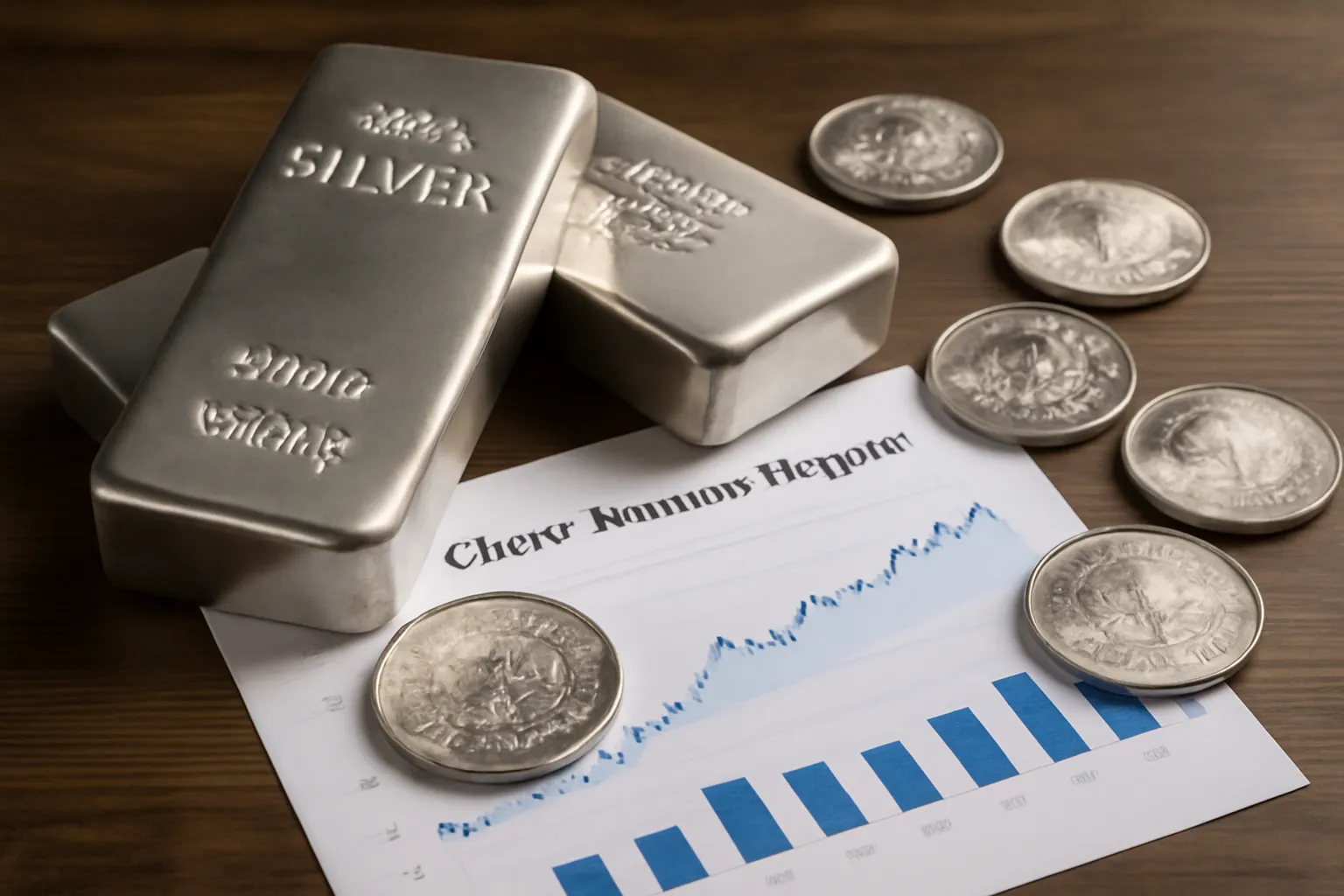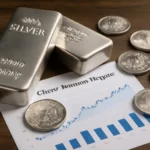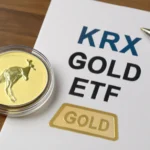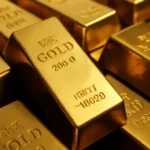Are you looking to invest in silver? Wondering about silver ETFs and their future outlook? Dive into the world of silver investments and discover the key methods, benefits, and potential risks. Read on to learn how to make the most of silver as an investment asset.
Silver has long been a sought-after asset for investors looking to diversify their portfolios and hedge against inflation. As an industrial metal with intrinsic value, silver offers a unique blend of stability and opportunity for both novice and experienced investors. This article delves into the various silver investment methods, particularly focusing on the rising popularity of silver ETFs, their outlook, and how to effectively manage a silver investment.
Understanding Silver Investment: How to Invest in Silver
Investing in silver is not just about buying silver bars or coins, although that is one way to go about it. There are several avenues through which investors can get exposure to silver, depending on their risk tolerance, investment goals, and financial knowledge.
1. Physical Silver (Bars, Coins, and Bullion)
The most traditional method of silver investment involves purchasing physical silver. Investors can acquire silver in the form of bars, coins, or bullion. These tangible assets can be stored at home, in a safe deposit box, or through a professional storage service. The primary advantage of this method is that it offers a direct claim to the metal, ensuring its tangible value.
However, this investment method comes with its own set of challenges. Storing silver securely, understanding market prices, and dealing with potential premiums for the physical metal can complicate things. Despite these drawbacks, physical silver remains a popular choice for those seeking a more hands-on approach to investing.
2. Silver ETFs (Exchange-Traded Funds)
For investors who want exposure to silver without the hassle of storing physical metal, silver ETFs have become an increasingly popular choice. These funds track the price of silver and are traded on major exchanges just like stocks. By purchasing shares in a silver ETF, investors gain exposure to the price movement of silver without having to worry about the logistics of physical storage.
There are various silver ETFs available, each with different strategies and investment methods. Some track the price of silver directly, while others invest in silver mining companies. One of the biggest advantages of silver ETFs is their liquidity, as they can be bought and sold quickly on the stock market. Additionally, they provide a more cost-effective way of investing in silver for those who prefer a more passive approach.
3. Silver Mining Stocks
Another indirect way to invest in silver is through silver mining stocks. Investors can purchase shares in companies that mine silver, thus gaining exposure to the silver market through these companies’ operations. Silver mining stocks often outperform silver itself during periods of rising prices, offering potentially higher returns. However, these stocks are also subject to risks associated with the mining industry, such as operational issues, geopolitical risks, and environmental concerns.
In contrast to physical silver, investing in silver mining stocks adds an element of business risk, but it can also provide dividends and potential growth opportunities.
4. Silver Futures and Options
For more experienced investors, silver futures and options offer another method of gaining exposure to the metal. Futures contracts allow investors to agree to buy or sell silver at a specific price at a predetermined date in the future. This method is more complex and carries a higher risk, but it can also offer significant returns. It’s not recommended for beginners due to its complexity and the need for a deep understanding of the commodities market.
Silver Investment Outlook: What Does the Future Hold?
The outlook for silver investments remains robust, with a mixture of positive factors influencing the demand for the metal. As a versatile commodity, silver has uses in industries ranging from electronics and medicine to renewable energy and automotive manufacturing. Its increasing role in the global green economy is expected to drive demand in the years to come.
1. Industrial Demand
The rise of clean energy technologies, such as solar panels and electric vehicles, has significantly increased the industrial demand for silver. Silver is a key component in photovoltaic cells used in solar panels, as well as in electric vehicle batteries and other electronic components. As the global transition to renewable energy accelerates, silver’s role in these sectors is poised to grow, which could drive up its price.
2. Investment Demand
In addition to its industrial applications, silver is also seen as a store of value during periods of economic uncertainty. Many investors turn to silver during times of inflation or currency devaluation as a hedge against economic instability. This trend is expected to continue, as investors seek safe-haven assets in times of financial turbulence.
3. Price Volatility
While silver’s long-term outlook is generally positive, the metal is known for its price volatility. Unlike gold, which tends to be a more stable store of value, silver prices can fluctuate significantly in the short term. This volatility is due in part to silver’s dual role as both a precious metal and an industrial commodity. While this volatility can provide opportunities for traders, it also presents risks for long-term investors.
Silver Investment ETFs: The Advantages and Risks
Silver ETFs offer a convenient and accessible way to invest in silver without the hassle of owning physical silver. These ETFs typically track the price of silver or silver-related assets, making them an ideal option for investors seeking exposure to the metal without directly buying bars or coins.
1. Advantages of Silver ETFs
-
Liquidity: Silver ETFs can be easily bought and sold on major stock exchanges, offering investors quick access to silver exposure.
-
Lower Costs: With no need for storage, insurance, or security concerns, silver ETFs tend to have lower overall costs compared to owning physical silver.
-
Diversification: Some silver ETFs invest not only in physical silver but also in silver mining companies, providing additional diversification in silver-related assets.
-
Passive Investment: Investors don’t need to worry about the complexities of buying and selling physical silver, making silver ETFs a convenient option for passive investors.
2. Risks of Silver ETFs
-
Market Risk: Like all investments, silver ETFs are subject to market risks. The price of silver can be volatile, and this can directly affect the value of the ETF.
-
Tracking Error: Some silver ETFs may not perfectly track the price of silver, resulting in discrepancies between the performance of the ETF and the price of silver itself.
-
Management Fees: While ETFs tend to have lower fees than traditional investment methods, they still incur management costs, which can eat into potential profits over time.
Conclusion
Silver remains an attractive investment option for many due to its unique combination of industrial demand, precious metal appeal, and role as a safe-haven asset. Whether you choose to invest in physical silver, mining stocks, or through ETFs, understanding the different methods and their associated risks is crucial. As global trends shift toward renewable energy and technology, silver’s value is expected to grow, making it a compelling choice for diversifying your investment portfolio.
No matter the approach, it’s important to stay informed about silver market trends and to select the investment method that best fits your financial goals and risk appetite. Remember that like any investment, silver comes with both opportunities and challenges. The key is in balancing these factors and making informed decisions.






